Katie’s dad needs a little maths advice – so he’s asked his daughter for some help, and she’s used it as an excuse to go on about maths for a while, as usual.
Dear The Aperiodical,
I’ve been working on a scale model of an underground mine, which will be lit using fibre optics – thin cylindrical strands of clear material, which can transmit light from a source at one end and output light at points all over the model.
All the strands will come together behind the scenes and be pointed at a light source inside a box – but if I have 24 strands with circular cross-section, each 1.5mm in diameter, how big a hole would I need to drill in the box for all the strands to pass through?
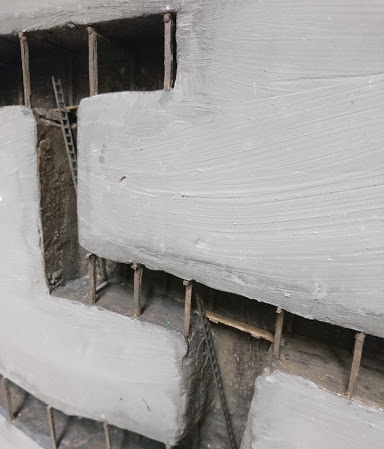
Since I’m an engineer at heart, my usual approach would be to put the bundle of fibres together and just measure it with some callipers – but I can’t do this, as they’re still in the post and haven’t arrived yet. Can you help?
Dad Steckles, Home
This is just the kind of question maths can help with! There are a few approaches to this, each of which has a different level of mathematical subtlety, and I’ll start with the most naive and work my way up.
Essentially, all we’re looking for here is the size of a circle which contains 24 1.5mm diameter circles. We could start by working out the area that 24 1.5mm diameter circles would cover – with a radius of 0.75mm, the total area would be:
\[ 24 \times ( \pi \times 0.75^2 ) \sim 24 \times 1.767\ldots \sim 42.411mm^2\]
Then the question would be, what size of circle will cover an area of 42.411 square millimetres? Another calculation:
\[ 42.411 = \pi \times r^2 \qquad \Rightarrow \qquad r^2 = 42.411 \div \pi = 13.5\]
Then if $r^2 = 13.5$, we have $r \sim 3.67$. This means a circle of radius 3.67mm (or diameter 7.34mm) will fit 24 1.5mm diameter circles inside it. The temptation at this point to round up to the nearest integer and tell my dad ‘8mm’ was strong, but I wondered if you could actually fit the circles in a 7.34mm circle. Let’s check:


It doesn’t work! In fact, the number of circles that doesn’t fit in the bigger circle, even with my generous definition of ‘non-overlapping’, was so many (7) that I was able to arrange them into a sad face nearby.
So what went wrong? Well, obviously, the area of the bigger circle needs to be more than the area of the smaller ones, since there are gaps between the circles. Circles don’t pack efficiently – in two dimensions, the best you can do is arrange them in a hexagonal lattice, which fills around 90.24% of the space.
Let’s factor this in! If the area of the smaller circles is only going to account for about 90% of the area, we can take our value for that – which was $42.411mm^2$ – and find the number it’s 90% of, by dividing it by 0.9. This gives $47.12mm^2$, which leads us to a circle of radius 3.87mm, or diameter 7.745mm. So let’s try that:
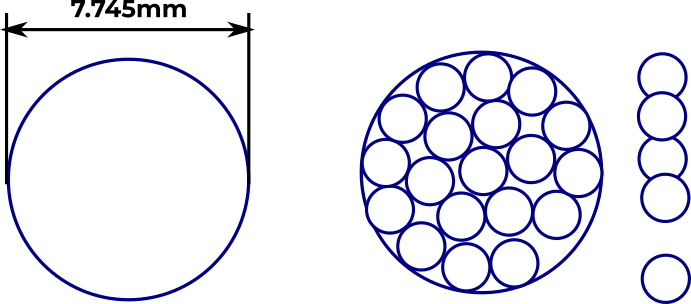
This doesn’t seem to work either – while we now only have 5 leftover circles (enough to form an exclamation mark of surprise and disappointment), there’s still not enough space in the circle. This is because, while circles can achieve a packing efficiency of 90%, this is only in the case where they’re arranged in a hexagonal grid, and not inside a larger circle.
So what happens if we arrange our circles in a hexagon? Well, that doesn’t quite work either, as 24 isn’t a centred hexagonal number, which means we can’t fit all of them into a nice hexagon.
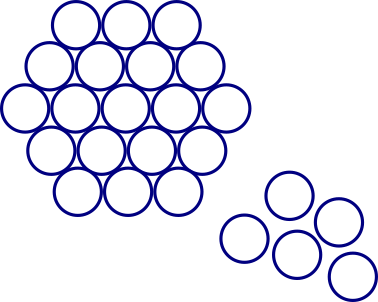
Even if we cram the extra ones in at the sides, they only fit into a circle of diameter 9.02mm, which has a bunch of space left over.
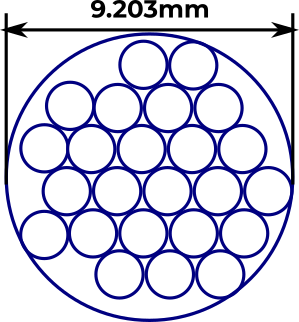
So what’s the best we can do with circles in a circle – and how big a circle do we actually need? It turns out this kind of problem is sufficiently complex that finding an optimal arrangement is probably best done using some kind of clever algorithm, or by trial and improvement. That is to say, by Other People, so I can just look it up (slightly rubbish, but sometimes that’s how it goes).
This means that Wikipedia has us covered – there’s a whole article on Circle Packing in Circles, which includes the optimal arrangement for n circles for a whole range of values of n. Sadly, this range stops at 20, which isn’t helpful for us.
Even more luckily though, Wolfram Alpha can take care of it – if you enter ‘pack 24 circles in a circle‘, it’ll give you various ways to do this, including one based on a hexagonal tiling and one on a square tiling, and also the optimal tiling.

This tells me that the optimal packing gives a packing efficiency of around 75.14% (which explains why my circles were never big enough!), and involves using a large circle of diameter 8.47mm.
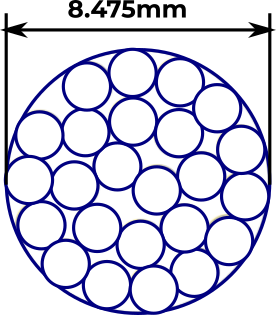
In practice, I’m also going to round this up to the nearest sensible drill bit size, and probably tell my dad to dig out his 9mm drill bit since 8.5mm might be a bit tight. Maths to the rescue!